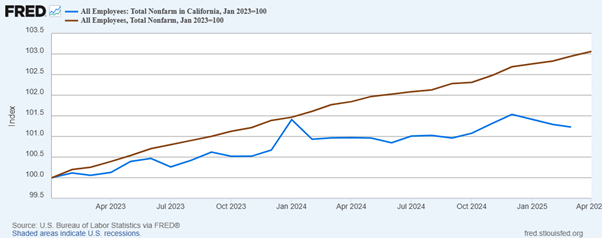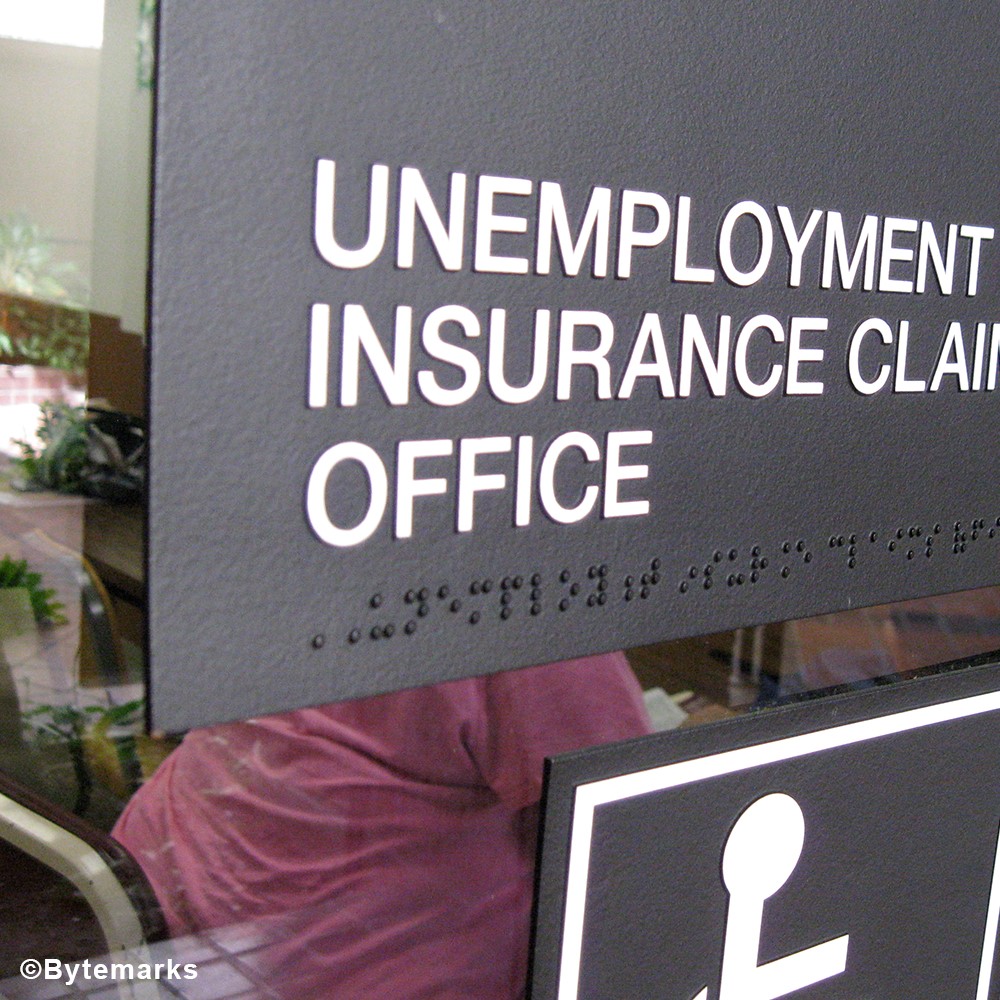Gov. Gavin Newsom and California’s progressives point to the Trump Administration’s imposition of tariffs as a reason for its economic slowdown, and the LAO acknowledges that unpredictable policymaking at the federal level puts California’s ‘fragile economy at risk.’
But while California’s ports have seen a decline in economic activity over the past few weeks, which adversely affects consumers and businesses alike, the tariffs are merely one factor among many. High-costs of living, burdensome regulatory schemes, and a litigation-friendly legal environment have all contributed to the outflow of business and citizens to states such as Texas and Florida.
Every state has felt the effects of the Trump tariffs, and yet California’s anaemic job growth stands in stark contrast to the steady growth at the national level.
A cursory comparison of total nonfarm employment in California and the United States beginning in January 2023 is incredibly telling: Figure 1 demonstrates how job growth nationally has been steady and consistent, job growth in California has been far more turbulent, increasing until the end of 2023 before . In fact, California has seen a slight decline in its nonfarm employment since Jan 2024.

Earlier this year, Governor Newsom introduced the ‘California Jobs First Economic Blueprint,’ a $245-million project intended to boost employment across a variety of sectors. This state-initiative would create 13 economic regions throughout the State, the plans for each would prioritize sustainability and diversity initiatives by ‘mobilizing broader state resources’ and ‘simplifying the incentive toolkit.’
Such mealy-mouthed and empty sloganeering won’t instil within Californians much confidence, especially among those who are still awaiting the completion of California’s high-speed rail project. Initially scheduled to be completed by 2020, officials now expect it to be up and running sometime between 2030 and 2033, if at all, at a price far costlier than was initially forecast.
The State’s latest ambitious spending plan will likely be plagued by the same bureaucratic bloat which has doomed the high-speed rail initiative, and unless California is willing to undertake the bold regulatory reform necessary to create a business-friendly environment, job growth will continue to stagnate.
Nikhil Agarwal is a Pacific Research Institute policy associate.

